This week in the Bread Experience Bread Baking Blog, we made No Knead Ciabatta. We’re continuing our comparison of the Kneadlessly Simple no knead method versus the traditional kneaded method found in the Bread Baker’s Apprentice. So far, I like both methods. Both methods utilize a similar steaming technique to simulate hearth baking, the difference is that one uses hot water and the other utilizes ice water. Very interesting indeed!
Although this is a no knead bread, it does require a little bit of hand-shaping but that’s the fun part.
This recipe is also from Kneadlessly Simple by Nancy Baggett. I really like the Kneadlessly Simple technique but it’s a little bit confusing going back and forth between the two methods. I think I’ll get the hang of it pretty soon.
Ciabatta means ‘slipper’ and Nancy Baggett says that “a tidy shape is not all that important…the defining characteristic of the loaf is a noticeably holey, puffy interior, which requires a softer than normal dough.” Well, that’s a good thing because mine ended up being a flat slipper although it tasted really good even after a couple of days.
No Knead Ciabatta
Makes: 2 Ciabatta loaves
Ingredients:
- 3 cups (15 ounces) unbleached all-purpose white flour, plus more as needed
- Scant 1 1/2 teaspoons salt
- 3/4 teaspoon instant yeast
- 1 1/2 cups ice water, plus more if needed
- 1 tablespoon olive oil, plus extra for brushing loaf top
Directions:
Mixing the dough:
In a large bowl, mix together the flour, salt, and yeast. Vigorously stir in the water, scraping down the sides of the bowl. Mix the dough until it is thoroughly blended.
Next, vigorously stir in the olive oil. Stir in extra water if the mixture is too stiff or add extra flour if necessary to stiffen the dough a bit. I think my dough was too soft. I was trying not to add too much flour so I think I ended up not adding enough.
First Rise:
Brush the top of the dough with olive oil. Cover the bowl with plastic wrap and refrigerate the dough for 3 to 10 hours.
Remove the dough from the refrigerator and let it rise at cool room temperature for 12 to 15 hours.
Second Rise:
Spray two 9 x 12-inch sheets of baking parchment with nonstick spray, then dust each with 1/4 cup flour, making a slight mound in the center. Line a large rimless baking sheet or the back of a baking sheet with another sheet of parchment paper and dust the parchment with flour.
Loosen the dough from the bowl all the way around using a well-oiled rubber spatula trying not to deflate the dough. Cut the dough in half using kitchen shears being careful not to deflate the dough. I think this is where I messed up as well. It was pretty flat.
Turn out each portion onto the prepared sheets of parchment. Dust the tops of the dough with flour.
Oil your fingertips, then gently push and pat each portion out into an oblong, or “slipper,” about 9 x 5 1/2 inches. Push the sides in so that the middle is narrower than its heel and toe.
These loaves don’t look too much like slippers to me, more like the Planters’ Peanut Guy as Nancy Baggett describes it.
Use a flour-dusted spatula to loosen the slippers from the parchment.
Lift up the loaves, one at a time and place them as far apart as possible onto the parchment-lined baking sheet.
Reform the dough as necessary into the slipper shapes.
Press deep indentations into the slippers all over with flour-dusted fingertips.
Tent the baking sheet with nonstick spray-coated oil.
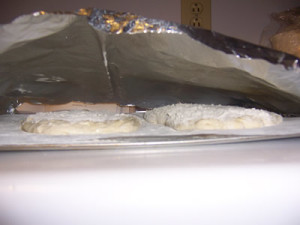
For a regular rise, let the dough rest at room temperature for 1 1/2 to 2 1/2 hours. Continue the rise until the dough has doubled from the deflated size, removing the foil as the dough nears it. Unfortunately, my dough never did rise and I got impatient after several hours. So I just decided to bake it anyway.
Preparing the oven for hearth baking:
Place a rack in the lowest position in the oven 20 minutes before baking time and preheat the oven to 500 degrees F. Set a broiler or other steam pan on the oven floor.
Baking the loaves:
Add a cup of ice water to the steam pan. Reduce the temperature to 475 degrees F and bake on the lowest rack for 15 to 20 minutes, until the loaves are golden and crusty. Bake for 5 to 10 more minutes, until a skewer inserted in the thickest part comes out almost clean on the tip.
Then place the pan on the floor of the oven for 2 to 4 minutes to brown the bottom of the loaves.
I didn’t do this part because of the way my oven is made it wouldn’t work. I just let the loaves cook for an additional few minutes on the lowest rack of the oven. Let the loaves stand for 10 minutes on the pan.
Cooling the loaves:
Transfer the loaves to a wire rack, and let them rest until completely cooled.
Here are the flat slippers. I guess I could say that these are ballet slippers.
These loaves slice better once they are cooled.
I actually waited a day before I sliced the bread. I just covered the loaves with a tea towel and let them rest on the counter all night. Mainly because it was late and I wanted to go to bed.
Serving and storing the loaves:
You can serve this bread for sandwich bread or grilling. Or just eat it for a snack like I did. Mine didn’t rise very well so it worked out just fine as a snack bread.
The bread was really good at room temperature. The holes aren’t huge and airy but it does have holes!
It will keep for 2 to 3 days on the counter draped in a tea towel. It can be frozen in an airtight bag for up to 2 months; however, it should be crisped in a preheated 400 degrees F oven.
This bread actually kept a little longer than 3 days. It still tasted good with olive oil and seasonings.
Happy Baking!
Cathy
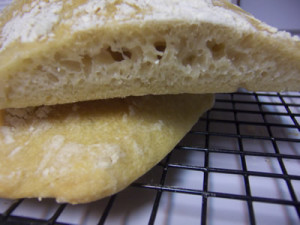
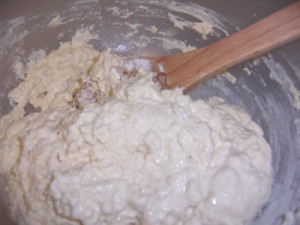
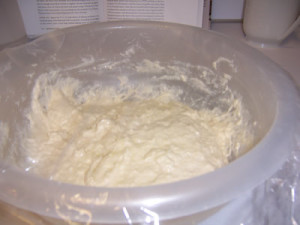
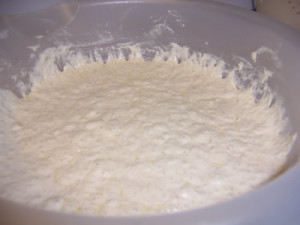
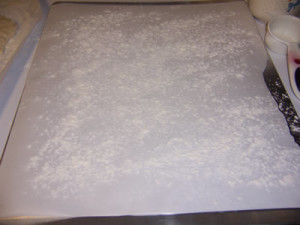
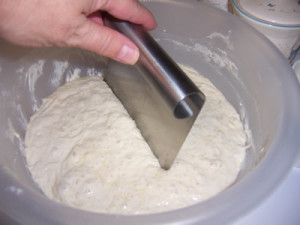
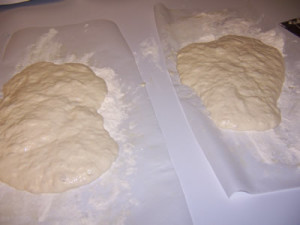
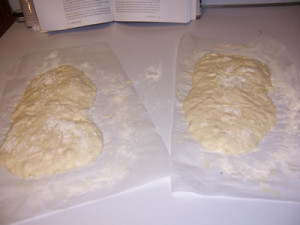
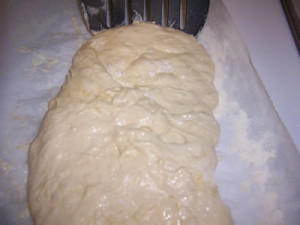
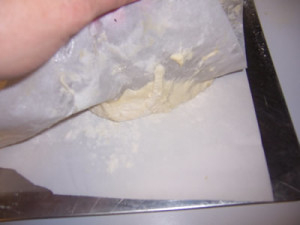
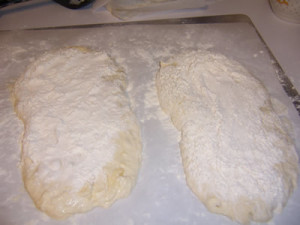
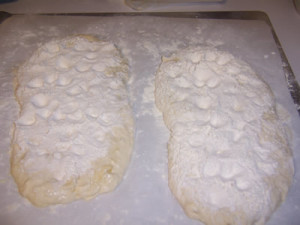
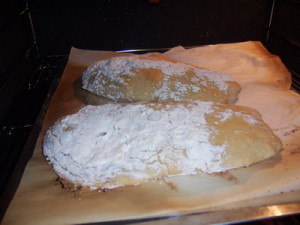
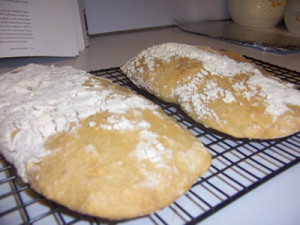
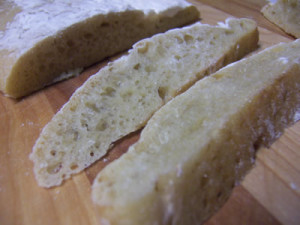
Frieda says
Cathy, that’s great you tried a no-knead recipe! Have you tried making no knead rolls? I have a great video on that if you are interested!
Cathy says
Hi Frieda,
I haven’t tried the no knead rolls yet. Would love to see the video.
Thanks,
Cathy